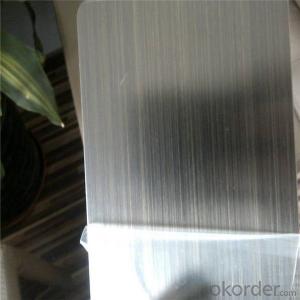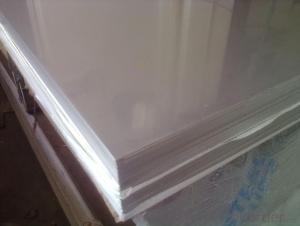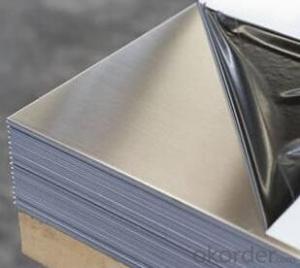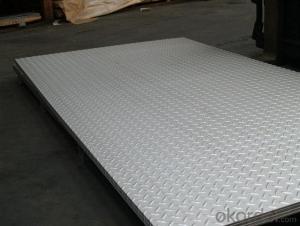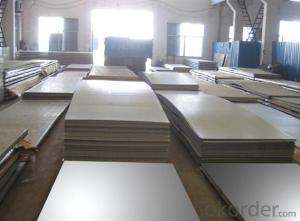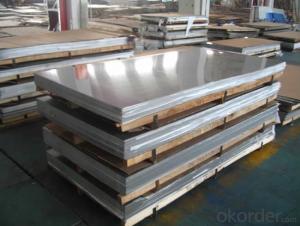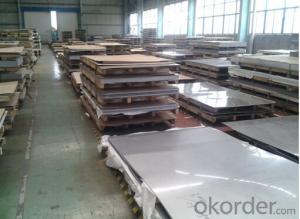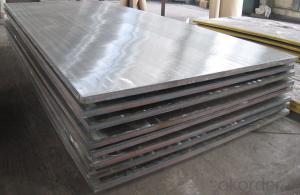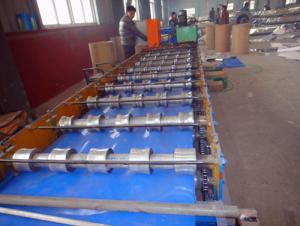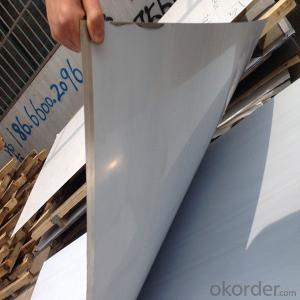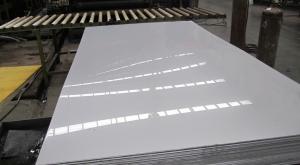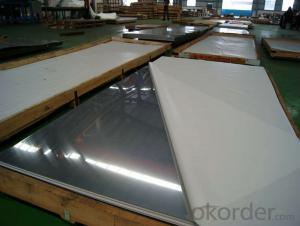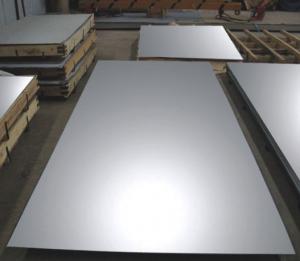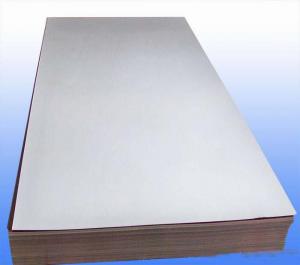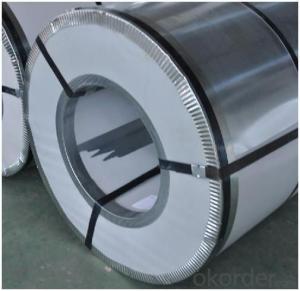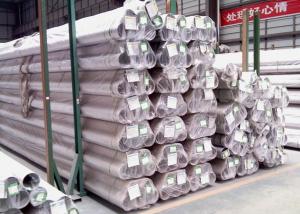Full Hard Temper Stainless Steel Sheet WUxi
- Loading Port:
- Shanghai
- Payment Terms:
- TT OR LC
- Min Order Qty:
- 1 m.t.
- Supply Capability:
- 20000 m.t./month
OKorder Service Pledge
Quality Product, Order Online Tracking, Timely Delivery
OKorder Financial Service
Credit Rating, Credit Services, Credit Purchasing
You Might Also Like
Specification
Standard:
ASTM
Technique:
Cold Rolled
Shape:
Square
Surface Treatment:
Polished
Steel Grade:
300 Series
Certification:
SGS
Thickness:
2
Width:
1219
Length:
2438
Net Weight:
12
Full Hard Temper stainless steel sheet
Product Information
| Name | Full Hard Temper stainless steel sheet | |||
| Type | stainless steel sheet | |||
| Finish | 2b | |||
| Thickness | 3mm | |||
| Avaible Size | 1000*2000mm, 1219*2438mm, 1500*3000mm | |||
| SS Grade | 304 | |||
| Avaible Finish | 2B, BA, HL, 8K | |||
| Mill | TISCO,LISCO,JISCO,BAOSTEEL,BAOXIN, Eastern Special Steel etc. | |||
| MOQ | 2 Tons | |||
| Payment Term | 30%T/T; L/C at sight | |||
| Price Term | FOB/CFR/CIF | |||
| Delivery | 7-10 days after the deposit | |||
| Packaging | Seaworthy Export Standard or Wooden Case | |||
| Application | construction field;ship building industry;petroleum and chemical industries;war and electricity industries;food processing and medicalindustry; boiler heat exchanger; machinery and hardware industry | |||
| Chemical composition | ||||
| Grade | SUS304 | SUS 316 | SUS 430 | SUS 201 |
| Elong(10%) | Above 40 | 30MIN | Above 22 | 50-60 |
| Hardness | ≤200HV | ≤200HV | Below 200 | HRB100,HV 230 |
| Cr(%) | 18-20 | 16-18 | 16-18 | 16-18 |
| Ni(%) | 8-10 | 10-14 | ≤0.60% | 0.5-1.5 |
| C(%) | ≤0.08 | ≤0.07 | ≤0.12% | ≤0.15 |


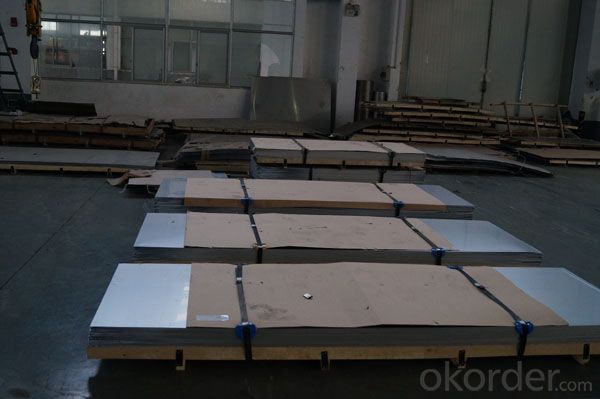
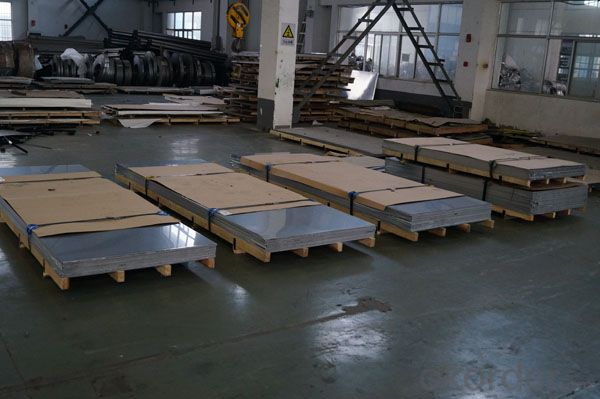
- Be extensively applied to architectural decoration, such as elevator decoration, luxurious doors, outdoor projects, wall decoration, advertisement nameplates, sanitary ware, ceiling, corridor, hotel hall, shop facade, etc. - For furniture, kitchenware, food industry, electronic industry, medical equipment, etc. | |||
| Main business | |||
 | Thickness from 0.3-0.3mm,width 1500mm maxim, | ||
| No.4.Brush,Hairline finish. | |||
| BA/6K,8K Mirror,Supper Mirror. | |||
| Gold, Rose gold, Champagne gold, Copper, Bronze, Black, Blue, Purple, Green ETC. | |||
| Many type of models,such as linen,cubes,diamond,panda,bamboo,stained Etc. | |||
| Mainly process after the poliashing and grinding.Art of the stainless steel which widely used in elevator doors/cabins and other decoration projects. | |||
| Stamping series,Marble type,woodgrain type,laser surface,anti-fingerprint, Sand vibration checkered and many kinds of combination patterns. | |||
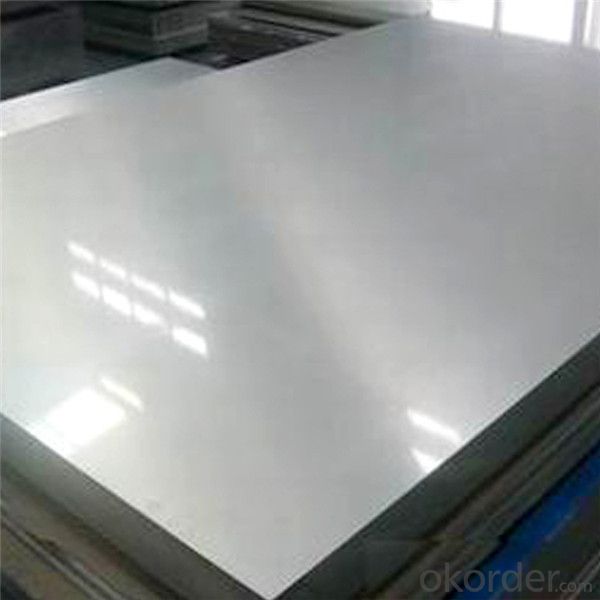
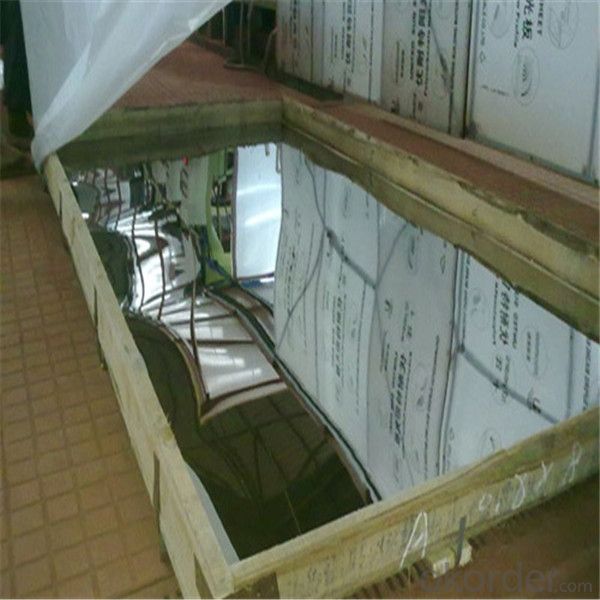
- Q: Can stainless steel sheets be used for roofing applications?
- Yes, stainless steel sheets can be used for roofing applications. Stainless steel is a durable and corrosion-resistant material, making it suitable for use in outdoor environments. It is commonly used in architectural applications, including roofing, due to its strength, longevity, and aesthetic appeal. Stainless steel roofing sheets are available in different thicknesses and profiles, allowing for versatility in design. Additionally, stainless steel is fire-resistant and can withstand extreme weather conditions, making it a reliable choice for roofs.
- Q: How do I select the appropriate thickness for stainless steel sheets?
- When selecting the appropriate thickness for stainless steel sheets, there are a few factors to consider. First and foremost, you should determine the specific application or purpose for which the stainless steel sheets will be used. If you are looking for stainless steel sheets for decorative purposes, such as in interior design or architectural projects, a thinner gauge may be suitable. Thinner gauges, typically ranging from 26 to 30 gauge, are more flexible and easier to shape, making them ideal for intricate designs or curved surfaces. On the other hand, if you require stainless steel sheets for structural or industrial purposes, a thicker gauge would be more appropriate. Thicker gauges, generally ranging from 18 to 20 gauge, offer increased strength and durability, making them suitable for heavy-duty applications, such as construction, automotive, or manufacturing. Additionally, it is crucial to consider the intended use of the stainless steel sheets. If they will be subjected to high levels of wear and tear, exposure to harsh environments, or heavy loads, it is advisable to opt for a thicker gauge to ensure the sheets can withstand these conditions without compromising their integrity. Lastly, budgetary constraints may also play a role in determining the appropriate thickness. Thicker gauges tend to be more expensive due to the higher amount of material required. Therefore, it is important to strike a balance between the required strength and the available budget. In summary, when selecting the appropriate thickness for stainless steel sheets, consider the intended application, the required strength and durability, and any budget constraints. By taking these factors into account, you can choose the most suitable thickness that will meet your specific needs.
- Q: Are stainless steel sheets suitable for elevator interiors?
- Elevator interiors can greatly benefit from the use of stainless steel sheets. This material is both durable and versatile, providing numerous advantages for elevator design and construction. Its strength and resistance to corrosion make it the perfect choice for enduring heavy usage and potential exposure to moisture or chemicals that are commonly found in elevator environments. Customizing and fabricating stainless steel sheets to fit specific elevator dimensions and designs is a simple task. They can be polished to a high shine, adding a sleek and modern touch that complements various interior styles. Moreover, stainless steel is easy to clean and maintain, making it a practical option for heavily trafficked areas like elevators. Not only is stainless steel a sustainable material that can be fully recycled, but it also has a long lifespan, reducing the need for frequent replacements. Additionally, it offers excellent fire resistance, which is crucial for ensuring the safety of elevator occupants. In summary, stainless steel sheets offer a durable, visually appealing, and low-maintenance solution for elevator interiors, making them highly suitable for use in elevators.
- Q: What are the benefits of using embossed stainless steel sheets in elevator interiors?
- There are several benefits of using embossed stainless steel sheets in elevator interiors. Firstly, embossed stainless steel sheets add a touch of elegance and sophistication to the overall design of the elevator. The embossed patterns create a visually appealing surface that can enhance the aesthetic appeal of the interior space. This is especially important in commercial buildings and high-end residential complexes where a luxurious ambiance is desired. Secondly, embossed stainless steel sheets are highly durable and resistant to wear and tear. Elevator interiors are subject to constant use and can be prone to scratches, dents, and other damages. The embossed pattern on the stainless steel surface helps to hide minor imperfections, ensuring that the interior maintains its pristine appearance for a longer period of time. Additionally, stainless steel is known for its corrosion resistance, making it a suitable choice for environments with high humidity levels, such as elevator shafts. Furthermore, embossed stainless steel sheets are easy to clean and maintain. Elevator interiors are often exposed to dirt, fingerprints, and other stains. The smooth surface of the embossed stainless steel makes it easy to wipe away these marks, ensuring that the interior always looks clean and well-maintained. This is particularly important in public spaces where cleanliness is essential for creating a positive impression on users. Additionally, embossed stainless steel sheets offer a high level of customization. They can be manufactured in various patterns, textures, and finishes, allowing for endless design possibilities. This enables architects and designers to create unique and personalized elevator interiors that reflect the desired theme or branding of a building. The versatility of embossed stainless steel also makes it easy to match with other interior design elements, such as flooring, lighting fixtures, and wall coverings. In conclusion, the benefits of using embossed stainless steel sheets in elevator interiors include enhanced visual appeal, durability, ease of maintenance, and customization options. These qualities make embossed stainless steel an ideal material for elevators in various settings, from commercial buildings to residential complexes, adding value and elegance to the overall design.
- Q: What are the benefits of using mirror-finish stainless steel sheets?
- There are several benefits to using mirror-finish stainless steel sheets in various applications. Firstly, the mirror-like surface of these sheets adds a touch of elegance and style to any space. Whether it is used in interior design, architecture, or decorative pieces, the reflective nature of the mirror finish enhances the overall aesthetic appeal. Additionally, mirror-finish stainless steel sheets offer exceptional durability and longevity. The high-quality stainless steel material used in their production ensures resistance to corrosion, rust, and staining, making them suitable for both indoor and outdoor use. This quality also makes them easy to clean and maintain, saving time and effort in upkeep. Another advantage of mirror-finish stainless steel sheets is their ability to reflect light. This characteristic makes them an excellent choice for spaces that require enhanced lighting or for applications where light distribution is essential. The reflective surface helps to brighten up the environment, making it ideal for areas such as kitchens, bathrooms, and commercial spaces. Moreover, mirror-finish stainless steel sheets are highly versatile and can be used in a wide range of applications. From countertops and backsplashes in kitchens to wall claddings, elevator interiors, and even custom-made furniture, their versatility allows for creative and unique designs in various industries. Furthermore, mirror-finish stainless steel sheets have excellent heat resistance properties, making them suitable for applications that involve high temperatures. This feature makes them a popular choice in commercial kitchens, industrial settings, and other environments where heat exposure is a concern. Lastly, mirror-finish stainless steel sheets are an environmentally friendly option. Stainless steel is highly recyclable, and using mirror-finish sheets promotes sustainability by reducing the need for new materials. This aspect aligns with the growing emphasis on eco-friendly practices and the desire to reduce the carbon footprint. In conclusion, the benefits of using mirror-finish stainless steel sheets include their elegant appearance, durability, light reflection capabilities, versatility, heat resistance, and eco-friendliness. These qualities make them a desirable choice for various applications, providing both aesthetic appeal and functional advantages.
- Q: Who knows the production process of stainless steel plate?
- Stainless steel surface process:Stainless steel has a variety of surface processing to broaden its application areas, different surface processing makes the surface of stainless steel different, making it unique in the application.The corrosion environment requires smooth surface for smooth surface is not easy to fouling. Deposition of dirt can make stainless steel rusty and even cause corrosion.In the spacious lobby, stainless steel is the most commonly used decorative materials for the elevator decoration, although the surface of the fingerprint can erase, but affect the appearance, it is best to use the appropriate surface to prevent leaving fingerprints.
- Q: Are stainless steel sheets suitable for nuclear power plants?
- Yes, stainless steel sheets are suitable for use in nuclear power plants. Stainless steel is a widely used material in the nuclear industry due to its unique properties that make it suitable for such high-risk environments. Firstly, stainless steel has excellent corrosion resistance, which is crucial in nuclear power plants where the presence of corrosive substances can be high. Corrosion can compromise the structural integrity of materials, leading to safety hazards and potential failures. Stainless steel's resistance to corrosion helps ensure the longevity and reliability of equipment and structures in nuclear power plants. Secondly, stainless steel has high strength and toughness, making it capable of withstanding extreme conditions such as high temperatures and pressures that are present in nuclear power plants. This strength and toughness enable stainless steel to withstand the harsh environment and potential mechanical stresses that can occur during normal operation or accidents. Additionally, stainless steel has good heat resistance, which is important in nuclear power plants where high temperatures are generated during the nuclear fission process. Stainless steel's ability to retain its strength and structural integrity even at elevated temperatures makes it suitable for containing and handling radioactive materials and hot fluids. Furthermore, stainless steel is easy to clean and maintain, which is crucial in nuclear power plants where cleanliness and sterility are essential. Regular cleaning and maintenance are required to prevent the build-up of radioactive contaminants and ensure the safe and efficient operation of equipment and systems. Overall, stainless steel sheets are highly suitable for use in nuclear power plants due to their corrosion resistance, strength, toughness, heat resistance, and ease of maintenance. The use of stainless steel helps ensure the safety, reliability, and longevity of equipment and structures, contributing to the overall efficiency and effectiveness of nuclear power plants.
- Q: How do you prevent discoloration or staining on stainless steel sheets?
- To prevent discoloration or staining on stainless steel sheets, there are several steps one can take. First, it is important to clean the sheets regularly using mild soap or detergent and warm water. Avoid abrasive cleaners or scrub brushes that could scratch the surface. After cleaning, rinse thoroughly with clean water and dry with a soft cloth to prevent water spots. In addition, it is crucial to avoid using harsh chemicals like bleach, ammonia, or chlorine-based cleaners on stainless steel sheets. These chemicals can cause discoloration or staining. Instead, opt for stainless steel-specific cleaners or natural alternatives such as vinegar or lemon juice. Proper storage is also essential. Stainless steel sheets should be kept in a clean and dry environment to prevent exposure to moisture or humidity. Moisture can lead to corrosion or rust, resulting in discoloration. If the sheets are stored outdoors, make sure to adequately cover them to protect against rain or snow. Applying a protective coating or sealant on stainless steel sheets can help prevent discoloration or staining. There are various products available specifically designed for stainless steel protection. It is important to follow the manufacturer's instructions for application and reapplication if necessary. Furthermore, it is important to avoid contact between stainless steel sheets and other reactive metals such as iron, copper, or aluminum. When these metals come into contact with stainless steel, a chemical reaction called galvanic corrosion can occur, leading to discoloration and staining. To prevent this, ensure separation or isolation between stainless steel and reactive metals. Regular maintenance is crucial in preserving the appearance and integrity of stainless steel sheets. Regularly inspect the sheets for any signs of discoloration, staining, or damage. Address any issues promptly to prevent further deterioration. If stubborn stains are present, use a non-abrasive stainless steel cleaner and a soft cloth to gently rub the affected area in the direction of the grain. By following these preventive measures, the appearance and integrity of stainless steel sheets can be maintained, ensuring they remain free from discoloration or staining for an extended period of time.
- Q: What is stainless steel AB board, please?
- It should be said that BA (Bright, Annealing, bright annealing) plate, and 2B plate difference is that annealing process is different, 2B using annealing and pickling combination process, BA using hydrogen protection, annealing under anaerobic environment. The rolling process and leveling process of the two surfaces are also different.
- Q: What are the different types of patterned finishes available for stainless steel sheets?
- There are several different types of patterned finishes available for stainless steel sheets, each offering a unique aesthetic and functionality. Some of the most common patterned finishes include: 1. Diamond: This pattern features a raised diamond-shaped texture on the surface of the stainless steel sheet. It provides enhanced grip and is commonly used in applications where slip resistance is important, such as flooring or industrial equipment. 2. Linen: The linen finish is characterized by a textured pattern that resembles woven fabric. It adds a subtle elegance to stainless steel sheets and is often used in interior design applications, such as wall cladding or decorative panels. 3. Checkered: This pattern consists of a grid of raised squares or rectangles, giving the stainless steel sheet a checkerboard-like appearance. The checkered finish is often used for decorative purposes, as it adds visual interest and can create a retro or industrial look. 4. Bead Blasted: In this finish, the stainless steel sheet is blasted with fine glass beads to create a matte texture with a slightly rough surface. Bead blasted finishes are commonly used in architectural applications, as they provide a modern and uniform appearance while reducing glare and fingerprints. 5. Etched: Etched finishes involve chemically altering the surface of the stainless steel sheet to create intricate patterns or designs. This process can achieve a wide range of effects, from simple line patterns to complex images. Etched finishes are often used in decorative applications, such as signage, artwork, or custom designs. 6. Sandblasted: Similar to bead blasting, sandblasting involves using high-pressure sand or other abrasive materials to create a textured surface on the stainless steel sheet. This finish provides a rougher and more pronounced pattern compared to bead blasting, making it suitable for applications that require a more industrial or rugged appearance. 7. Mirror: While not technically a patterned finish, the mirror finish is worth mentioning as it is a popular choice for stainless steel sheets. This finish is achieved through a series of polishing and buffing processes, resulting in a highly reflective surface that resembles a mirror. The mirror finish is commonly used in architectural elements, such as cladding, decorative accents, or reflective surfaces. Overall, the choice of patterned finish for stainless steel sheets depends on the desired aesthetic, functionality, and specific application requirements. Each pattern offers a distinct look and texture, allowing for endless possibilities in design.
Send your message to us
Full Hard Temper Stainless Steel Sheet WUxi
- Loading Port:
- Shanghai
- Payment Terms:
- TT OR LC
- Min Order Qty:
- 1 m.t.
- Supply Capability:
- 20000 m.t./month
OKorder Service Pledge
Quality Product, Order Online Tracking, Timely Delivery
OKorder Financial Service
Credit Rating, Credit Services, Credit Purchasing
Similar products
Hot products
Hot Searches
Related keywords
